CNN- Salwa Tibi recalls how she covered several miles on foot in southern Gaza, in a desperate search for blankets and sheets that might help keep her four children and other young relatives warm at night.
The aid worker, 53, told CNN she and her husband were “full of fear” as they ventured out to buy supplies for the approaching winter season in Rafah, risking exposure to potential Israeli airstrikes.
“I felt bad for the kids, they had nothing to keep them warm and we were dying from the cold at night,” said Tibi, who works at the humanitarian agency CARE International.
She is staying in a rented house with at least 20 relatives including eight children and babies – the youngest of whom is three months old.
The kids, she said, “were screaming all day from hunger.”
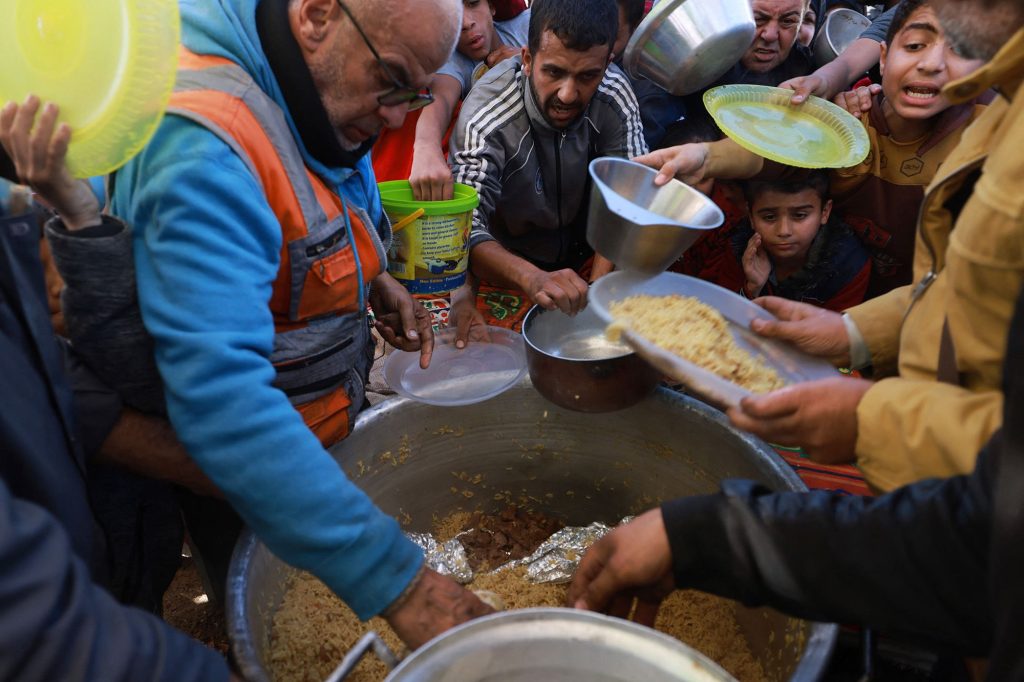
As winds, heavy rains and cooler temperatures descend on Gaza from November to February, aid workers and civilians trying to survive persistent bombardment told CNN they face harsh living conditions, insufficient access to warm clothing, and outbreaks of disease in overcrowded makeshift shelters. Food, fuel and water are ever scarcer, and the price of what little remains is spiralling.
The number of people killed in Israeli attacks in Gaza since October 7 has risen to 18,412, the Hamas-controlled Health Ministry in the enclave said Tuesday.
CNN cannot independently verify the numbers.
On Sunday, the Israel Defense Forces (IDF) said it had struck more than 22,000 targets in Gaza since October 7, when it launched its military operation in response to Hamas’ attack on Israel, in which more than 1,200 people were killed and over 240 taken hostage.
Senior US officials have warned Israel to minimise civilian casualties in the south, where it has now stepped up its military campaign targeting Hamas, after previously telling Gazans to flee there from the north of the strip.
Civilians like Tibi, who have been displaced multiple times since the fighting began, were forced to pack their belongings again and journey further south, near to the border with Egypt, as Israel on December 3 issued evacuation orders on social media ahead of the expansion of its ground offensive to the whole of the territory.
CNN has previously reported on Palestinian civilians who followed evacuation orders later being killed by Israeli strikes.
Several Palestinians who spoke to CNN, some of whom are sleeping on the streets with no shelter, say they are living with the threat of imminent death – either by an airstrike, starvation or untreated disease. The rainy season will compound every survival challenge for civilians, who say they are already exhausted by a war that has torn apart their homeland.
“If the situation stays this tragic, then Gaza is going to starve,” said Tibi.
Forcibly displaced Palestinians could not flee with winter clothes
Islam Saeed Muhammad Barakat did not have time to gather the belongings his family needs for winter when they fled their home in Gaza City.
“I feel some anxiety because we do not have enough blankets and warm clothes,” said Barakat, 48, a displaced civilian in Khan Younis, in southern Gaza, in messages relayed to CNN by Walid Mahmoud Nazzal, an NGO worker based in Ramallah.
The average temperature in Gaza falls to between 10°C and 20°C (50F to 68F) in December, dipping a couple of degrees lower on average in January. The rainy season typically lasts from November to February, with January the wettest month.
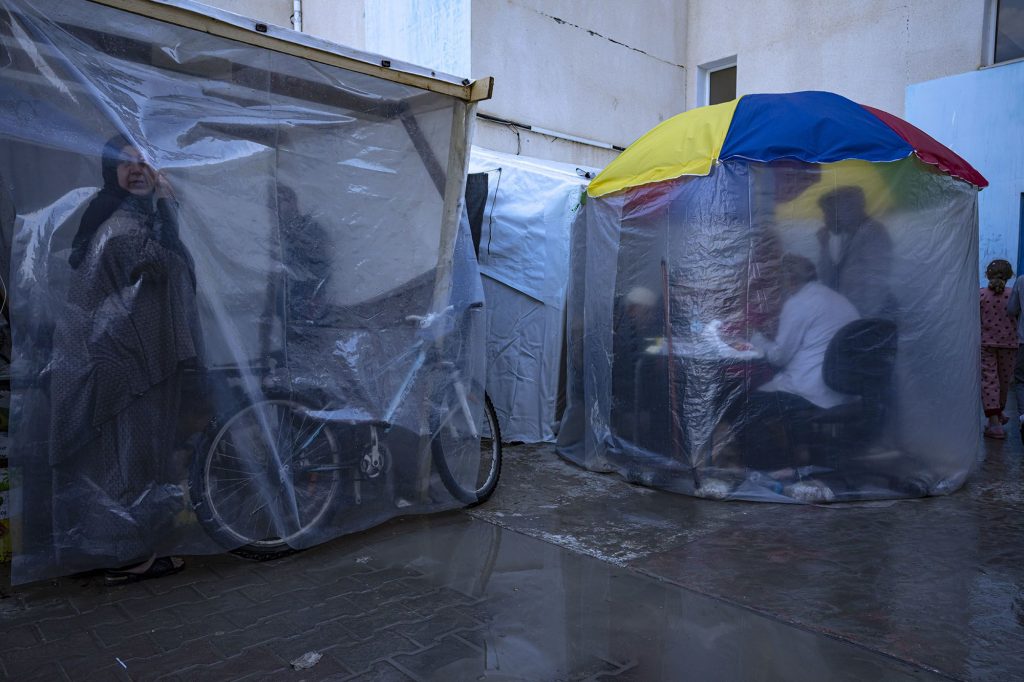
One reporting station near the border of southern Gaza and Israel indicated nearly twice the amount of average rainfall to date, while other surrounding reporting stations to the north showed less rain than normal.
Since his correspondence with CNN, Barakat and his family have been forced to flee to Rafah, where he is sheltering in a room with 10 relatives.
Almost 1.9 million people, more than 85% of the enclave’s total population, have been displaced since the beginning of the war, according to the UN Relief and Works Agency for Palestine Refugees (UNRWA).
More than 1.1 million of those are sheltering in facilities in central and southern Gaza, including in Khan Younis and Rafah where strikes have been reported, UNRWA said.
Most fled their homes with little more than the clothes on their backs, civilians and aid workers told CNN. Others who did take some belongings say they abandoned them due to exhaustion during the journey on foot from northern Gaza to the south.
“I had to take off the bag I was carrying and throw it away,” said Hazem Saeed Al-Naizi, the director of an orphanage in Gaza City who was among those heading south. “People did the same thing like me, they started throwing their bags.”
Al-Naizi was forced to flee to Rafah with the 40 people under his care – most of whom are children and infants living with disabilities. He recalled being too fatigued to hold the bag, crammed with baby milk, biscuits, dates, diapers, water and clothing, at the same time as carrying one of the orphans, 8-year-old Ayas.
“The road was filled with bags, which led to people falling to the ground when they were walking,” he said.
Civilians may not have expected their displacement to last into the winter months without access to their homes, said Rebecca Inglis, an intensive care doctor in Britain who regularly visits Gaza to teach medical students. Some have resorted to searching under the rubble of destroyed buildings for blankets and other essential supplies.
“They are woefully, woefully underprepared,” Inglis told CNN. “This degree of forcible displacement is new.”
Seeking shelter from the rain
Shadi Bleha has no roof to protect himself from the worsening weather. Instead, he is sheltering in the courtyard of a school.
“We are staying in a tent (made) from separate pieces of nylon,” the 20-year-old student, displaced from northern Gaza to Rafah, told CNN.
Bleha said he was living inside the makeshift tent with at least 23 relatives, including five children aged 5 to 12. On some nights, he sleeps outside next to a fire because there is not enough room for them all, he said.
“We try to play some games with my family and sing together … to make them happy, at least for a small time.”
Many are sleeping in school courtyards, said Mohammed Ghalayini, 44, who was staying in Khan Younis when he spoke to CNN. He visited local schools where people are sheltering.
Some had lodged sand or cement at the base of their tents to try “to stop any of the flooding,” he added.
Elsewhere, patches of land have turned into sprawling tent camps, where thousands of civilians are living in cramped conditions.
Flash flooding caused by torrential rains spills rubbish and sewage into the streets, contaminating people’s limited food and water supplies.
Some displaced children in a tent camp in Deir Al-Balah, in southern Gaza, could be seen playing in the water following intense downpours on Tuesday.
But Rana Al-Najjar, a 13-year-old girl walking around barefoot, told CNN she found no joy in the rain.
“We are nine people living in this tent. Our tent is flooded with water, my siblings are freezing, and we don’t know what to do. We want to go back to our homes and not drown,” she said.
‘I see people starving’
Israel’s Coordinator of Government Activities in the Territories (COGAT), says it is “facilitating various humanitarian aid initiatives” to help the civilian population in Gaza, including allowing in aid deliveries – subject to security checks – supplying water and facilitating the establishment of field hospitals.
On Tuesday, four tankers of fuel and two tankers of cooking gas were allowed in, as well as 195 trucks of humanitarian aid, COGAT said.
But this is far from meeting the needs of displaced Palestinians. Essential goods have become hard to find – and are expensive when available. People walk for hours or stand in long queues to buy food and fuel, civilians told CNN.
The price of food and water has surged as supplies diminish, leading to widespread hunger and dehydration. The World Food Programme declared a “catastrophic hunger crisis” in Gaza on December 5. The relief organisation said it was forced to shut down its last remaining bakery because it had no fuel or gas, adding that it ran 23 bakeries before the war.
Reduced daylight hours mean people are less able to rely on solar power for generators needed to power water pumps.
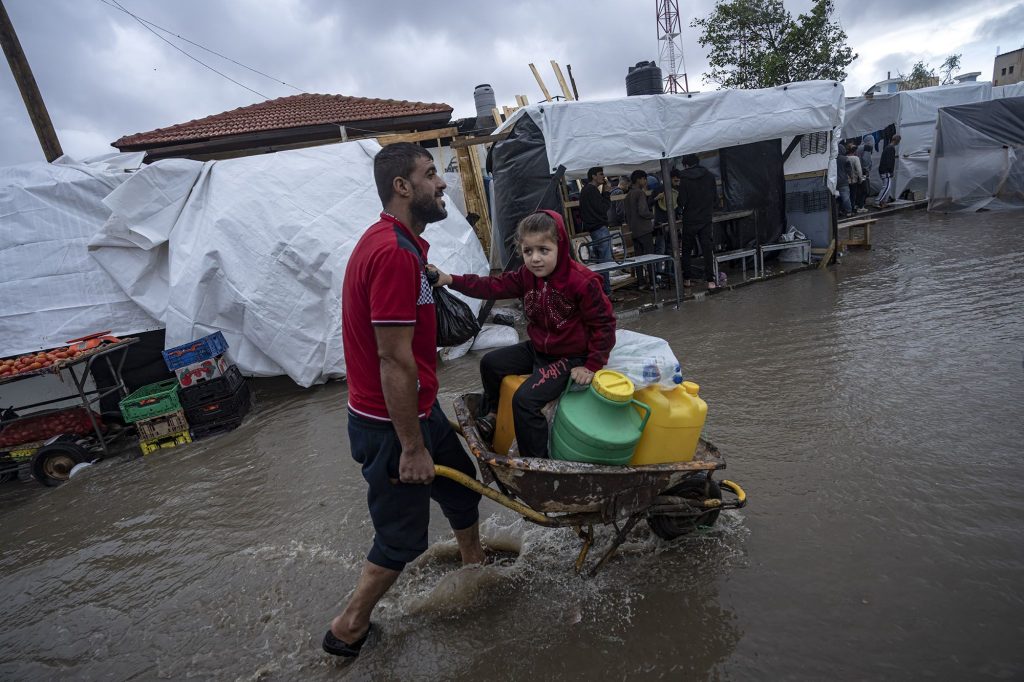
Tibi, the mother of four in Rafah, saves mineral water for the children and infants. The adults drink water sent through aid trucks, she said, which is “not 100% clean.”
Adults ration their meals so that children do not go hungry. “I see people starving, literally starving,” said Bleha, who eats one meal a day.
Civilians on the ground relayed to CNN how much costs have increased in recent weeks.
In some cases, the price of 1.5 litres of water has risen from two shekels (about 50 cents) to five shekels, said Ghalayini.
A kilogram of cucumbers worth one shekel could go for five or six shekels, while the price of flour, normally 40 shekels per 25-kilogram bag, reached 200 shekels in recent weeks.
One displaced family in Deir Al-Balah told CNN they were paying 140 shekels ($38) for 1,000 litres of non-drinkable water.
Aid workers described surviving on a diet of canned beans, bread, and hummus because they cannot cook their food without fuel. Others have set up makeshift cooking facilities in clay ovens, and over open fires, burning solid fuels like plastic, wood, garbage and cardboard instead of cooking with electricity or gas. Some use tin rocket stoves, where wood is burned in a vertical heat chamber to reduce smoke fumes, according to the UN’s children’s agency.
Those relying on solid fuels to heat indoor spaces are exposed to potential carbon monoxide poisoning, said Ghalayini.
Outside, street vendors are using burnable waste for fuel, which can release toxic fumes such as black carbon.
Cars powered by cooking oil or corn oil release “huge plumes of black smoke” into the atmosphere, he added.
The price of automotive transport has increased six-fold, according to Jamal Al Rozzi, executive director of the National Society for Rehabilitation, who has fled to Bani Suhelia, in the south, for his children’s safety.
The cost of moving goods in carts pulled by horses or donkeys has tripled, he added.
Diseases ‘spread like wildfire’
For those already struggling to stay safe, warm and fed, illness poses an additional risk.
In crowded shelters that cannot meet basic sanitation and hygiene needs, diseases “spread like wildfire,” said Inglis, the intensive care doctor.
She anticipates an uptick in upper respiratory tract infections because coughs, colds and viruses spread more quickly when people are clustered together without proper ventilation.
Civilians will be exposed to other illnesses including diarrhoea and hepatitis A, as well as body lice and scabies, because they cannot wash properly, Inglis added.
Roughly 160,000 to 165,000 cases of diarrhoea have been recorded among children under the age of five, a WHO official said Tuesday, describing the figure as “much more” than usual.
More than 130,000 cases of respiratory tract infections and 35,000 cases of skin rashes have been recorded, the Hamas-controlled health ministry in Gaza said in a report Monday, as well as thousands of cases of chickenpox, lice and scabies.
A colleague in southern Gaza, Inglis said, had told her of treating people with wounds “full of maggots” and elderly people suffering “dehydration and exhaustion” after fleeing from the north to the south.
Vulnerable populations, including malnourished children, pregnant and menstruating women, and those with disabilities, are more likely to have symptoms that are left untreated.
Israel’s complete siege and restrictions on aid entering Gaza have diminished drug supplies, leaving health workers unable to help many patients who are sick or treat those who have suffered injuries in the bombardment, increasing their risk of infection.
Barakat, in Khan Younis, said: “I and many of my children got sick with several viruses that have spread recently, namely the flu and many colds, and other unknown but painful and contagious viruses.”
Civilians with chronic illnesses including diabetes and high blood pressure are also more vulnerable to winter illnesses because the blockade has prevented access to treatment, said Inglis.
“Hospitals are not receiving enough medication so there is huge suffering on many levels,” Al Rozzi told CNN.
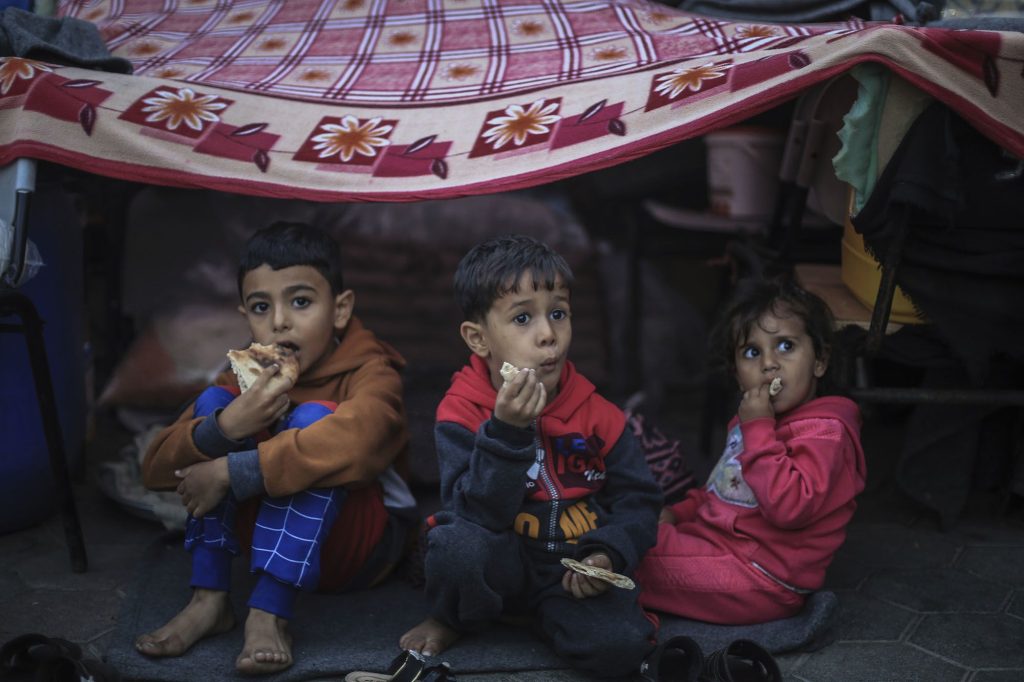
In Gaza, there are more than 2,000 cancer patients, 1,000 people with kidney disease, 50,000 people with cardiovascular disease and 60,000 diabetes patients, according to WHO.
Poorly controlled Type 2 diabetes can lead to complications including skin infections, heart attacks or strokes, Inglis said, adding that patients with treatable cancer are “going to die.”
About 359 patients are accessing dialysis units in the south, the Hamas-run Ministry of Health in Gaza told CNN on December 11.
Inglis said dialysis patients require treatment two to three times a week.
The largest dialysis unit in Al-Shifa, the largest hospital in Gaza, was forced to close after the Israeli military raided the hospital.
It has since re-opened with severely limited capacity.
The number of functioning hospitals along the strip has plummeted from 36 to 11, WHO said.
“The entire system has been systematically destroyed in this conflict in such a way that it will take years to rebuild,” said Inglis.
Al-Rozzi said Palestinians were in a state of “fear, anxiety and pain,” adding: “They feel worthless, and they have no clear view of tomorrow, or today.”
Barakat called on the international community to protect Palestinian lives, in the hope that peace will return to Gaza.
“Enough siege, enough starvation, enough killing, enough abuse, we have the right to live,” he said. “Our children have the right to play.”
_____________________________________________________________________
The-CNN-Wire
™ & © 2023 Cable News Network, Inc., a Warner Bros. Discovery Company. All rights reserved.



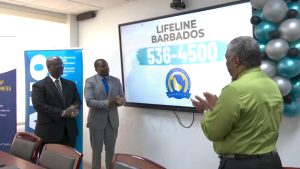

More Stories
West Terrace Primary celebrate 2024 NAPSAC victory
Farmer working to grow interest in pineapple farming
Lifeline Barbados officially launched